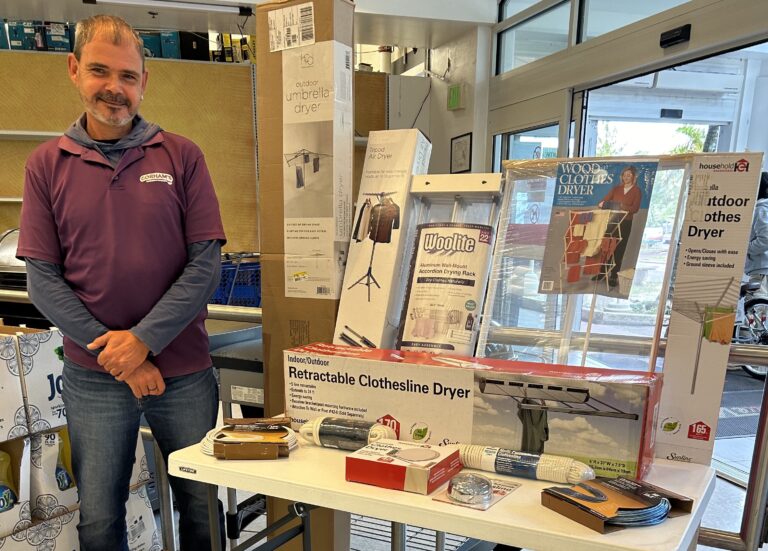Solar panels or a wind turbine aren’t the only answers to saving money on your monthly Belco bills. By hanging out your washing three times a week, instead of using your tumble dryer, you could save around 39 kilowatt hours (kWh) per month. When you consider that our electricity usage charges, fuel adjustment fees, regulatory authority fees and facilities charges are all calculated on a per kWh basis, the savings could quickly add up if you use this appliance less.
We spoke to Kevin Roberts, sales representative for housewares at Gorham’s, to find out the most effective alternatives for drying your laundry. And, it turns out, there are a lot, even if you don’t have a back yard.
DRYING RACKS
Easy to fold away and open out, and small enough to move around, a metal or wooden drying rack can be used inside, outside or on a porch or balcony. The metal Whitmor compact drying rack costs $80.99 and is sturdier and better for heavier laundry than it’s wooden counterpart, but the latter only costs $32.99. Another option, at $69.99, is the Tripod Air Dryer, but this one requires hangers to dry your clothes instead of pegs.
RETRACTABLE DRYING LINES
A space-saving and flexible option to dry your laundry naturally is a retractable washing line. This can be attached to something sturdy, such as an inside or outside wall, or tree, extended when needed, and then put away again when not.
With five lines that extend up to 34 feet, the option with the most drying space is the Household Essentials Indoor/Outdoor Retractable Clothesline Dryer. “If you don’t want to set it up from the side of the house or a tree, it comes with brackets and hardware included if you want to have it set up as a T-bar,” explained Mr. Roberts.
For something smaller, there are single line retractables, which extend up to 40 feet, or 8 feet. The latter is ideal for hanging in a bathroom, for example. Another option for smaller spaces, and lighter laundry, is the Woolite wall mounted accordion-style drying rack.
OUTDOOR CLOTHES LINES
If you have the space, a more permanent washing line outside could actually have your laundry dry before a tumble dryer has even finished its cycle. The three options available for this are the ‘umbrella’ washing line, also known as a ‘whirligig’, a newer version of this, called a ‘parallel clothes line’, and the traditional posts with rope or washing line – or just the rope or line if you have two appropriately spaced trees.
The household essentials umbrella-style washing line costs $144.99 and comes with a “sleeve”, which goes into the ground. The line is then easy to take out if strong winds are forecast.
The parallel clothes line is what Mr. Roberts recommended, if you have the space. It costs $189.99, but, he said, “This one is a bit sturdier. It’s better balanced. It has a bit more space than the umbrella.”
If you want a more permanent washing line, you will need lumber posts, which are $51.99 each for the smooth ones, and $53.49 each for rustic, along with wire or rope, and wire cable clamps.
RUST PROOFING
In Bermuda if there’s metal, there will be rust, even if the box says ‘rust-proof ’. For drying contraptions and hardware that you intend to use outside, Mr. Roberts recommended spraying them with Rust-Oleum Clear coat paint: “They will last a lot longer. Not a lot of people know that,” he said.
All prices were accurate at the time of writing, but are subject to change.

